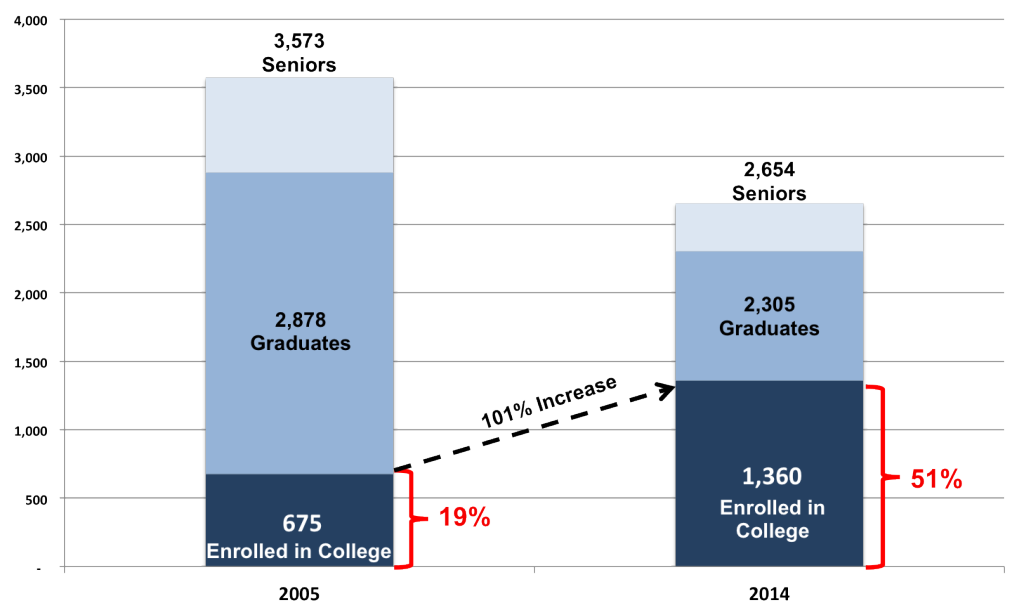The state just released new data on cohort graduation rates and college enrollment rates. Continuing our By the Numbers series, Educate Now! takes a look at the class of 2014.
THE GOOD NEWS
100% more students enrolled in college
In 2005, only 675 Orleans Parish Public School graduates enrolled in a two or four year college the following fall, compared to 1,360 graduates from New Orleans’ class of 2014.
Even though the 2014 senior class was much smaller than the 2005 senior class (2,654 students versus 3,753), our schools sent a much higher proportion of students to college. This tremendous increase is a testament to the hard work of educators in New Orleans.
2005 vs. 2014
| 2005 | 2014 | |
|
Number of seniors
|
3573 | 2654 |
|
Number of graduates
|
2878 | 2305 |
|
Number enrolled in college
|
675 | 1360 |
|
Percent of senior class in college
|
19% | 51% |
65% of Black males graduated on time: New Orleans outperforms nation
- The national graduation rate for Black males was 59%.
- Louisiana’s graduation rate for Black males was 59%.
- New Orleans graduation rate for Black males was 65%.


